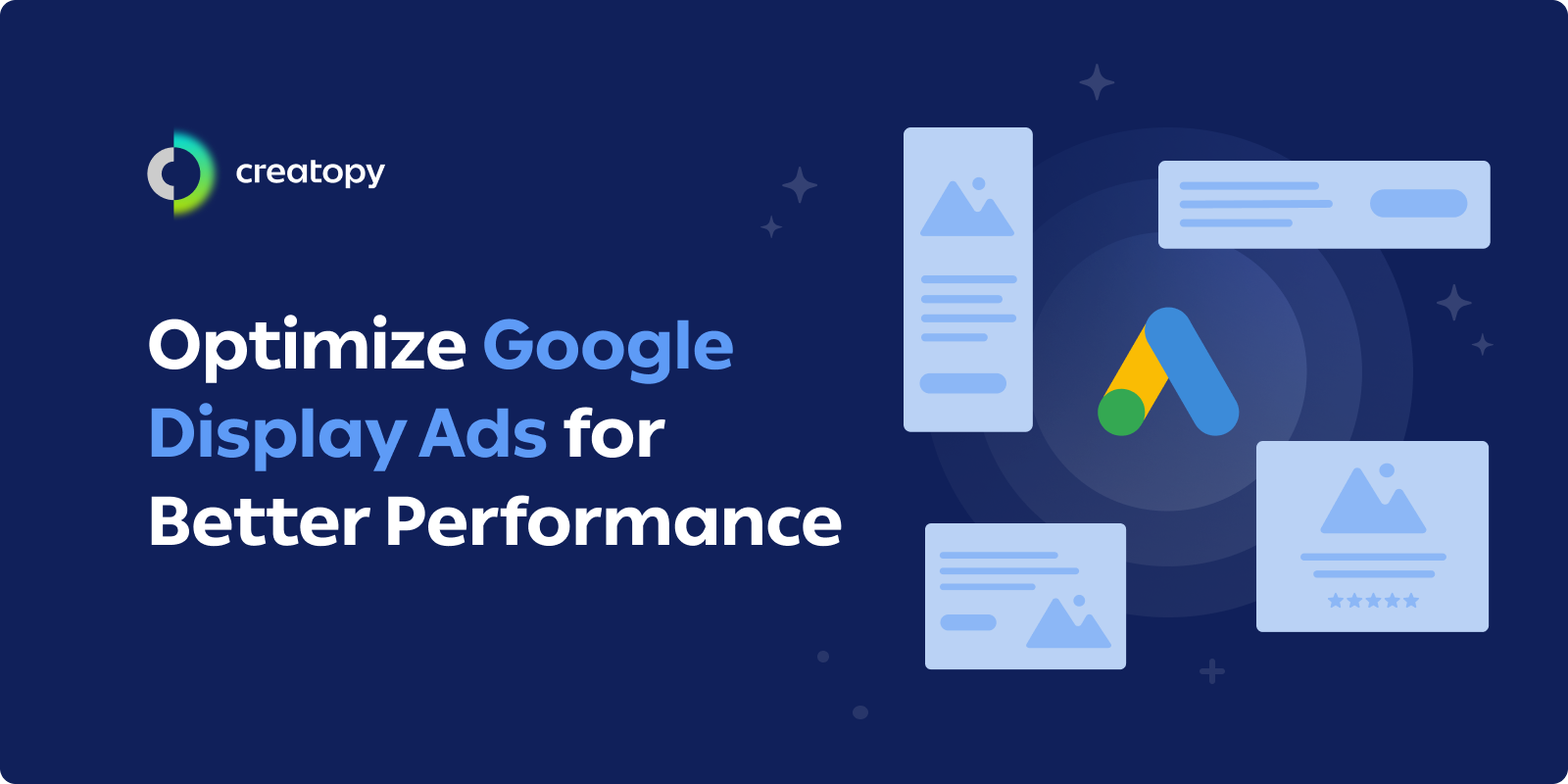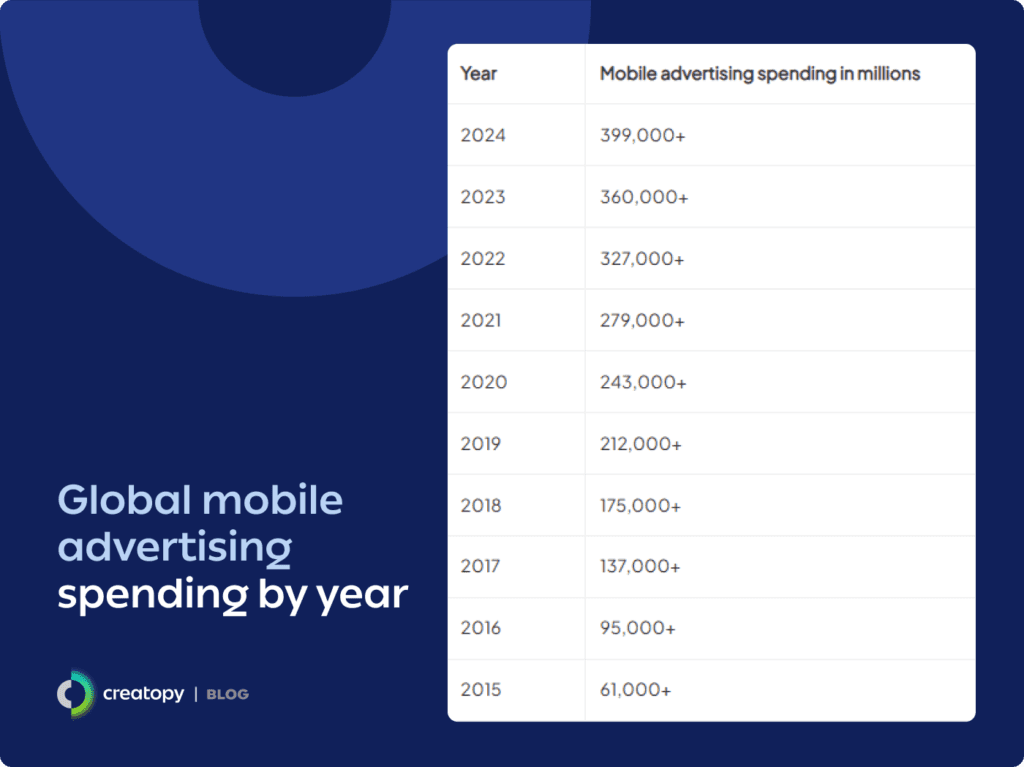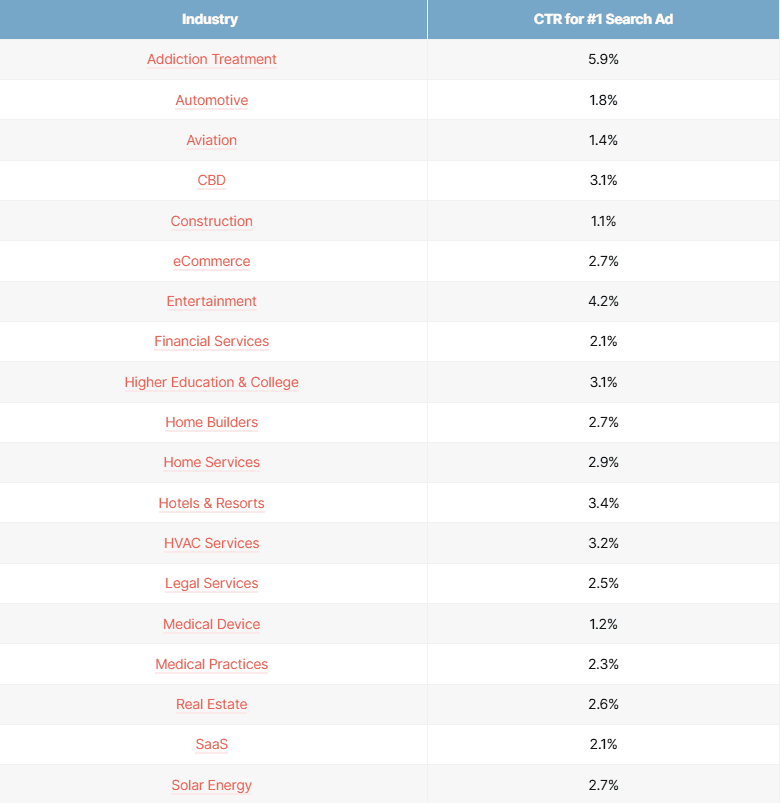Are you an agency? Scale your team's work and impact with The Agency Package.
Are you an agency? Scale your team's work and impact with The Agency Package.

Did you know that billions are being invested in digital advertising right now? Google display ads help businesses connect with customers across millions of websites and apps, and modern design tools have made creating them surprisingly simple; you can build professional ads, adapt them for different platforms, and add engaging features without any technical background.
According to Statista, the digital advertising market hit $740.3 billion in 2024, up 8.9% from 2023. This includes advertising via all popular online channels such as audio, search, or influencer marketing. If you're thinking about finding your place in online advertising, getting comfortable with Google display ad sizes and specs isn't just helpful—it's essential for success these days.
And you know what's even more impressive? The world of display advertising keeps growing at an amazing pace. Businesses invested no less than $207.4 billion in display ads during 2023, and they're expecting that number to hit $266.6 billion by 2026. Whether running a small business or managing campaigns for a major brand, understanding Google display ads and crafting compelling Google ad copy isn't just another marketing skill; these are the ones that can make or break your marketing success.
Google Display ads are visual advertisements that help businesses connect with potential customers wherever they browse online. According to Meetanshi, these ads can reach 9 out of 10 internet users through Google's vast network of over 35 million websites and apps.
Image: din articolul Display Advertising Statistics: Trends, Designs, and Key Data from 2024

Remember the early days of online advertising, when banner ads were about as sophisticated as a flashing "Click Here!" sign? Well, those days are long gone. Today's display ads are rich with media, interactive elements, and dynamic content that adapts to whoever's viewing them. And just like your favorite streaming service seems to know exactly what you want to watch next, they have gotten clever at figuring out who might be interested in what you're offering.
To be more precise, they come in various formats, including:
As for the network's targeting capabilities, they are nothing short of impressive. Businesses can now reach users based on their interests, browsing habits, and even their likelihood to buy. This precise targeting helps ensure advertising budgets are spent wisely on reaching the right people.
Display ads offer unique benefits that set them apart from other online marketing methods. PPC Land reports that display advertising costs increased by 47% in Q2 2024 compared to last year. Now, you might think that's bad news, but it actually shows that advertisers are seeing real value here, and they're willing to invest more to get it.
Display ads' visual nature helps businesses share their message while building trust with potential customers. Advertisers can test different designs and messages and then improve their ads based on real performance data. This ability to make quick improvements helps marketers get better results from their spending.
First Page Sage's research reveals that while display ads average a 0.089% click rate, they excel at building brand awareness and supporting other marketing efforts. This shows why display ads work best as part of a complete marketing plan rather than alone. When combined with other marketing channels, display ads can help improve results across all campaigns.
Getting ad sizes right matters more than ever as people use different devices to browse online. To succeed, advertisers must create ads that look good and work well across all screen sizes. The right ad sizes can significantly improve how many people see and respond to your ads.
Mobile platforms lead the way in display advertising. Statista reports mobile ad spending reached $399 billion in 2024, showing why mobile-friendly ads matter. The 320×50 mobile leaderboard format appears at the top or bottom of mobile screens. These ads need large enough text and clear images to work well on small screens.
Image: Global mobile advertising spending by year

YearMobile advertising spending in millions2024399,000+2023360,000+2022327,000+2021279,000+2020243,000+2019212,000+2018175,000+2017137,000+201695,000+201561,000+
The 320×100 large mobile banner gives more space for your message while still working well on phones. This bigger format lets advertisers include more details or larger images without annoying users. Many advertisers use this size to show product features or promote special offers that need more explanation.
Desktop displays need different ad sizes to work well across various website layouts. The classic 728×90 leaderboard remains popular, appearing at the top of web pages where people look first. These ads need the right mix of images and text to get their usage across effectively.
Image:
Format Type Ad Size Name Featured Placement
Mobile 320×50 Mobile Leaderboard Top and bottom of mobile websites and apps
Mobile 320×100 Large Mobile Banner Mobile news feeds and article breaks
Mobile 300×250 Medium Rectangle Within mobile content and apps
Desktop 728×90 Leaderboard Top and bottom of websites
Desktop 300×600 Half Page Website sidebars and article pages
Desktop 336×280 Large Rectangle Within article content
Desktop 970×90 Large Leaderboard Top of high-traffic websites
Desktop 160×600 Wide Skyscraper Website sidebars
Desktop 468×60 Banner Forums and older websites
Universal 250×250 Square Within text content and app interfaces
Universal 200×200 Small Square Sidebars and app interfaces
Display ad costs and results vary by industry and campaign goals. First Page Sage studied different sectors between June 2023 and November 2024, finding useful patterns that help advertisers plan better campaigns.
Entertainment companies see strong results, with a 4.2% click rate. This success comes from eye-catching visuals that match what users already enjoy watching. Financial services maintain a steady 2.1% click rate, reflecting their more traditional approach and audience.
Hotels and resorts achieve a 3.4% click rate, while HVAC services get 3.2%. These numbers show how timing and local targeting affect success. Addiction treatment leads with a 5.9% click rate, proving that relevant messages work well in healthcare advertising.
Image: din articolul precedent

Success in modern display advertising depends on showing ads to the right people at the right time. School4SEO found that over half of users search on their phones after seeing display ads, showing why ads must work well across all devices.
Content-based targeting has become one of the most effective methods in today's privacy-focused world. This approach places ads next to relevant content, making people more likely to click. The system looks at page content, user behavior, and past performance to place ads where they'll work best.
Understanding user interests helps create more effective campaigns. By looking at browsing history, search patterns, and how people interact with similar content, advertisers can design ads that feel more personal and relevant.
Making effective display ads requires balancing good design with technical requirements. The best campaigns use compelling images and clear messages while following all platform rules. This balance becomes especially important when ads appear in different places across Google's network.
Choosing the right fonts makes a big difference in ad success. Clear, easy-to-read text helps get your message across on any screen size. We recommend simple fonts for small sizes and making sure text stands out against the background.
Here are three fonts that consistently perform well:
Image showcasing each font's strengths in different roles:
HEADLINE (in Source Sans Pro, bold):
STRUGGLING WITH ADS?
MEDIOCRE ADS?
NO ADS AT ALL?
SUBHEADLINE (in Lato, medium):
Transform your campaigns from forgotten to unforgettable.
BODY COPY (in Helvetica Neue, regular):
The Brief. Where great ads come to life.
Even more, colors affect how people respond to ads and remember brands. Successful ads use colors that stand out and match the brand's identity across all ad sizes.
Image:
High-converting color combinations:
#1E90FF (Dodger Blue) + #FFFFFF (White): Creates trust and professionalism, perfect for financial or tech brands
#FF4500 (Orange Red) + #000000 (Black): Drives action and urgency, ideal for sales and limited-time offers
#27AE60 (Emerald Green) + #ECF0F1 (Light Gray): Promotes growth and stability, excellent for healthcare and wellness
#E74C3C (Flat Red) + #F9F9F9 (Off-White): Generates excitement and immediacy
#3498DB (Peter River Blue) + #2C3E50 (Dark Blue): Builds credibility and authority
#9B59B6 (Amethyst Purple) + #FFFFFF (White): Creates luxury and sophistication
Popular engagement-focused color schemes:
#7B68EE (Medium Slate Blue) + #F5F5F5 (Light Gray): Encourages exploration and interaction
#2ECC71 (Emerald) + #ECF0F1 (Cloud White): Promotes positive action and trust
#F1C40F (Sun Yellow) + #2C3E50 (Midnight Blue): Captures attention and drives engagement
#E67E22 (Carrot Orange) + #FFFFFF (White): Stimulates excitement and curiosity
#16A085 (Green Sea) + #F5F5F5 (White Smoke): Creates calm and confidence
#8E44AD (Wisteria Purple) + #ECF0F1 (Cloud White): Sparks creativity and interest
At The Brief, we know creating great display ads can be challenging. Our platform offers fully customizable display ad templates for every industry. Save hours of design time with our professional template collection, available in all standard Google Ads sizes and compatible with major ad networks.
Each template can be quickly customized with your brand colors, logos, and stock images from our integrated library, ensuring consistent branding across all your campaigns.
Image: The Brief's display ad templates for every industry
Tracking how ads perform helps ensure advertising success. Statista's data shows mobile advertising keeps growing each year, and there's a good reason for that—it works! But only if you're paying attention to the right signals.
Tracking conversions reveals how ads lead to sales and sign-ups; it shows you exactly where your customers are coming from and which paths they're taking to reach you. With today's tools, you can see how people interact with your ads across different devices.
Regular testing isn't just important—it's essential. Try different images, messages, and targeting options and find what works best for specific audiences.
Getting technical details right ensures ads work well across Google's network. Understanding and following specifications helps campaigns succeed.
File size affects how quickly ads load and how well they work. While Google allows files up to 150KB, smaller files often work better, especially for mobile users and areas with slower internet.
Different file formats serve various purposes. JPG works well for photos, PNG is better for text and graphics that need transparent backgrounds, and GIF allows simple animations to catch attention without slowing things down.
Display advertising keeps changing as technology advances and user preferences shift. Statista's research shows we're not slowing down—we're just getting started!
Privacy-focused targeting is changing how display ads connect with audiences. While traditional tracking methods are becoming limited, advertisers are turning to contextual targeting and AI-powered solutions that don't rely on personal data. Think of it as matching your ads with relevant content rather than following users around the internet—it's less intrusive, more effective, and exactly what today's privacy-conscious audience wants.
Even more, mobile-first design becomes more important as phone usage grows. Advertisers must think about mobile users from the start, ensuring ads work well on all screens. This shift requires new approaches to design and technical setup.
Display advertising isn't just evolving—it's offering new opportunities for marketers. Statista's projections show the industry's growing faster than ever, and the opportunities are just getting better.
Success in this space is possible, but it does take knowing your industry and how to take advantage of display ads – from the technical bits to the creative pieces. As for the new technologies and approaches, they are making them more effective than ever.
Whether you're just starting out or looking to improve your strategy, there's never been a better time to do so. Just remember: stay curious, keep testing, and don't be afraid to try new things. After all, that's how the best campaigns are made!
7 days free on us
Let's put these insights into action. Build, scale, and automate campaigns with AI-powered workflows.